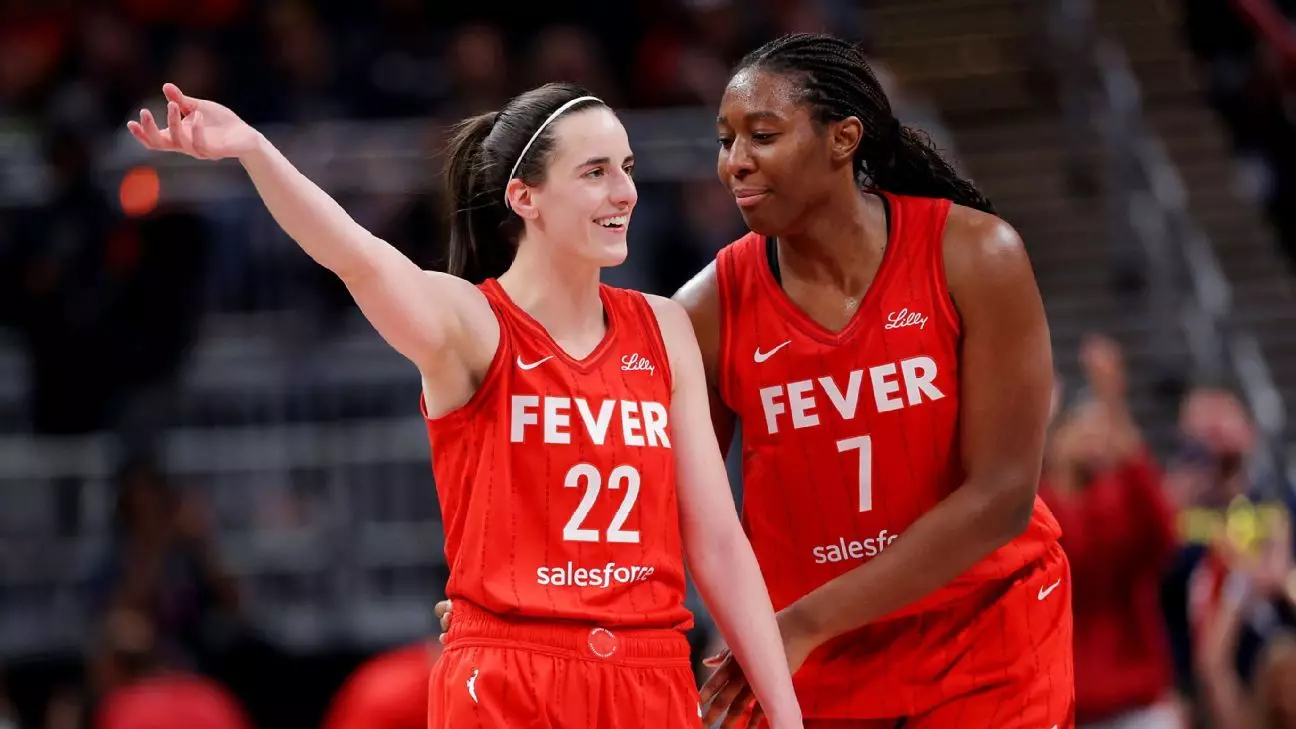The recent announcement of the WNBA All-Star team lineup, featuring Indiana Fever’s pivotal involvement, reveals more than just rosters—it exposes the subtle undercurrents of social dynamics shaping women’s sports today. At first glance, it’s a celebration of talented athletes, but beneath the surface lies an intriguing interplay of power structures, regional pride, and political considerations that challenge the notion of pure athletic merit. The fact that Indiana, a Midwestern state historically overshadowed by coastal centers in terms of cultural influence, now hosts the All-Star festivities, speaks volumes about the league’s ongoing attempt to democratize visibility. However, examining how the captains—Caitlin Clark and Napheesa Collier—maneuver within this setup unveils the complex politics that govern not only team selections but also broader societal allegiances.
The Influence of Leadership and Bias in Team Drafting
The drafting process selected by Clark and Collier isn’t a simple game of picking the best players—it’s a microcosm of larger issues surrounding representation and bias. Clark, a passionate and outspoken figure from Iowa, and Collier, a Louisiana-native representing Minnesota, might seem to be simply choosing based on skill and familiarity. Yet, their choices reveal subtle biases based on regional loyalty and personal relationships. Clark’s decision to include her Fever teammates Aliyah Boston and Kelsey Mitchell illustrates a preference for comfort and familiarity, a tendency that often blinds sports to the meritocratic ideal that some purport to champion. Conversely, Collier’s selections reveal her connections to her former UConn teammates and her loyalty to Minnesota, complicating the narrative of fairness.
This divergence hints at an ongoing debate: Should sports prioritize regional balance, or should they solely focus on individual excellence? The choices made by these captains underscore the importance of acknowledging that sports are rarely neutral spaces—biases, conscious or unconscious, shape even the most celebrated events like the All-Star game. It raises an uncomfortable question: Are we fostering true competition or merely reinforcing existing affiliations and favoritism?
Power Play Through Coaching Choices
Perhaps the most telling aspect of the selection process lies in the overhaul of coaching assignments—an explicit demonstration of how power dynamics operate behind the scenes. Initially, Cheryl Reeve from Minnesota was assigned to coach Clark’s team, following the league’s logic of aligning top records with coaching assignments. However, the captains’ decision to switch Reeve with Sandy Brondello from New York, who coaches Collier, reflects a level of agency that transcends mere routine assignment. It hints at a desire to control narratives and influence perceptions of fairness.
This move also underscores how leadership roles in sports are often intertwined with regional affiliations. Reeve, representing the Lynx, and Brondello, leading the Liberty, become symbols of broader debates about influence and visibility. Such decisions, seemingly administrative, become powerful acts that subtly shape the perception of whether the league truly prioritizes merit or cultural allegiance.
A Reflection of Broader Societal Challenges
The intricate details of the draft—who was picked, the trading intentions, and the coaching switches—go beyond sports; they mirror societal struggles over identity, representation, and equity. The fact that the league’s top players are all aligned in the same game, orchestrated at Indiana’s Gainbridge Fieldhouse, can be seen as a metaphor for regional and ideological unity. Yet, the process to reach this unity remains rife with underlying negotiations, compromises, and power plays.
The narrative surrounding the event also raises questions about accessibility and recognition. Are these decisions truly reflective of a merit-based system emphasizing talent and effort? Or are they influenced by behind-the-scenes political negotiations, regional loyalties, and personal favoritism? The answer to this has profound implications for how fans perceive fairness and integrity in women’s sports. If even at this elite level, selections are marred by bias, what does that say about the broader societal challenge of ensuring equitable representation for marginalized groups?
The Politics of Visibility and Regional Pride
Finally, hosting the All-Star game in Indiana isn’t an insignificant detail. As the heartland of the country, Indiana’s selection for this event symbolizes an effort to diversify the league’s appeal and perhaps to challenge the dominance of coastal markets in basketball. Yet, it also raises questions about regional prioritization in women’s sports—are efforts to promote inclusivity enough, or are they merely symbolic gestures?
Throughout the process, the league’s maneuvers show a balancing act between broadcasting star power and fostering a sense of community in different markets. The way players and coaches navigate this landscape—resisting, conforming, or subtly influencing decisions—illustrates that sports cannot be disentangled from their cultural and political contexts. As fans and observers, we must critically recognize that the spectacle of an all-star game is as much about national identity and regional pride as it is about athletic achievement.
The way the WNBA’s All-Star rosters were fashioned offers a revealing look at the complex interplay of influence, regional loyalty, and social politics. It questions deeply held notions of fairness, exposing that even in a sport celebrated for its progressiveness, underlying currents of bias and power assertions persist.


Leave a Reply